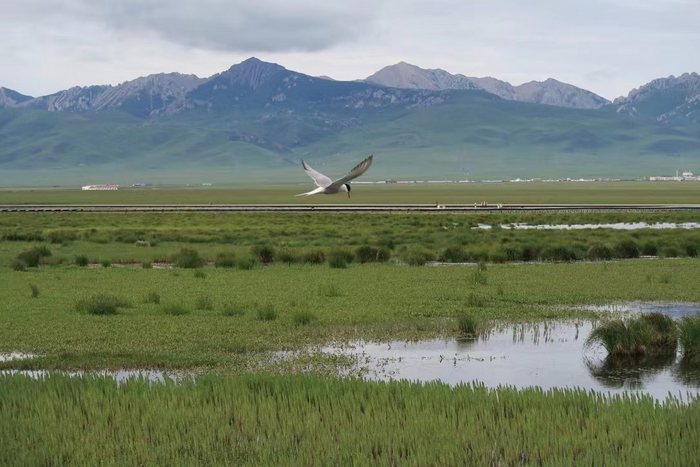A new study, published in Nature Climate Change on March 20 and led by researchers from the Institute of Atmospheric Physics of the Chinese Academy of Sciences, shows that pristine wetlands are currently a greenhouse gas sink, however, the greenhouse gas sink will be reduced by more than half (about -57%) in response to an average temperature increase of 1.5–2 °C.
“In other words, warming undermines the mitigation potential of pristine wetlands despite achieving the Paris Agreement’s goal of limiting the increase of global mean temperature between 1.5 and 2 °C above pre-industrial level,” said BAO Tao, first author of the study.
Whether pristine wetlands will act as a greenhouse gas source or sink under warming has been unclear because in-situ manipulative warming has yielded diverse wetland GHG emission responses.
In this study, the researchers integrated data from 167 independent wetland sites with measured carbon dioxide, methane, and nitrous oxide responses to experimental warming. Their goal was to explore the GHG response to warming across regions and among different wetlands and plant types.
They found that the difference in dominant plant functional types could well explain the changes in greenhouse gas exchange in different warming experiments. After warming, the sink of carbon dioxide increased in wetlands where vascular plants such as shrubs and graminoids dominated, while in wetlands where cryptogams such as mosses and lichens dominated, sources of carbon dioxide increased. Furthermore, warming promotes net methane emissions from wetlands regardless of the dominant plant functional type.
Although nitrous oxide efflux from wetlands is usually low, warming significantly enhanced (by about 27%) nitrous oxide emissions from wetlands dominated by graminoids. Considering that the greenhouse effect of nitrous oxide is 298 times that of carbon dioxide over a span of 100 years, even a slight increase in nitrous oxide emission could make a non-negligible contribution to global warming.
“We found that warming will promote the net emissions of methane and nitrous oxide in permafrost wetlands more remarkably than other regions, thereby exerting positive feedback on global warming,” said Dr. XU Xiyan, corresponding author of the study.
The Intergovernmental Panel on Climate Change highlighted in the Sixth Assessment Report that one of the main uncertainties in estimating future carbon budgets to meet the Paris Agreement’s goal is the uncertainty of greenhouse gas emissions from wetlands and their feedbacks to climate change.
“We tried to reveal the characteristics of wetland greenhouse gas emissions in response to warming and their underlying mechanisms, providing insights for modeling the wetland–climate feedbacks,” said Dr. JIA Gensuo, co-author of the study.


